Looking to jump into film photography but don’t know where to start? Getting recommended Portra by fellow film photographers, then hopping Reddit and seeing Cinestill is the crowd favorite? If all this is seeming daunting to you, look no further than our guide to the most popular film stocks to shoot with!
We’ll take a look through an array of the best and most popular film stocks – from the color negative classics, to some cinematic tungsten-balanced picks, and even some black and white favorites. Check out our guide to get you off to shooting film!
Want more film photography tips? Join our mailing list, and check out our several other film photography guides.
Kodak Portra
Kodak Portra is very much the most popular film stock on the market. It’s a professional film with 3 ISO levels at 160, 400 and 800 to accommodate grain levels and lighting availability. Portra is known for its warmer punchy tones, with a soft low contrast. It’s also known for capturing skin tones in their natural form.
For the rest of this guide, you’ll be seeing a lot about ‘exposure latitude’ – this refers to the film stock’s ability to capture images without being too overexposed (light) or underexposed (dark) if you shoot a couple stops below or above its stock ISO (also known as ‘pushing’ or ‘pulling’ film). Portra is known for its wide exposure latitude, being forgiving with both under or overexposure.
Can’t decide between the three different Portra options? Check out our Kodak Portra 160 vs. 400 vs. 800 post to compare the differences.
If these Portra prices are looking too steep recently, you could always try the look on your digital images with Portra presets!
Check out Kodak Portra:
35mm Film
- Portra 160 35mm Film: Get it on Amazon | Get it on Moment
- Portra 400 35mm Film: Get it on Amazon | Get it on Moment
- Portra 800 35mm Film: Get it on Amazon | Get it on Moment
Medium Format (120) Film
- Portra 160 Medium Format (120) Film: Get it on Amazon | Get it on Moment
- Portra 400 Medium Format (120) Film: Get it on Amazon | Get it on Moment
- Portra 800 Medium Format (120) Film: Get it on Amazon | Get it on Moment
 Images via @motvd and @ejbfilm
Images via @motvd and @ejbfilm
Kodak Gold 200
Kodak Gold 200 is a widely made, lower speed, and more affordable alternative to Portra 400. The film stock produces beautiful warm tones, made for the best of golden hours and warm color palettes. The 200 ISO is hungry for lots of natural or artificial lighting, but the tradeoff is an image with finer grain.
Kodak Gold does also come with lower exposure latitude and dynamic range, resulting in lost details in shadows – but this has come to be a known feature that photographers appreciate about Gold 200.
Check out Kodak Gold 200:
- Gold 200 35mm Film: Get it on Amazon | Get it on Moment
- Gold 200 Medium Format (120) Film: Get it on Moment
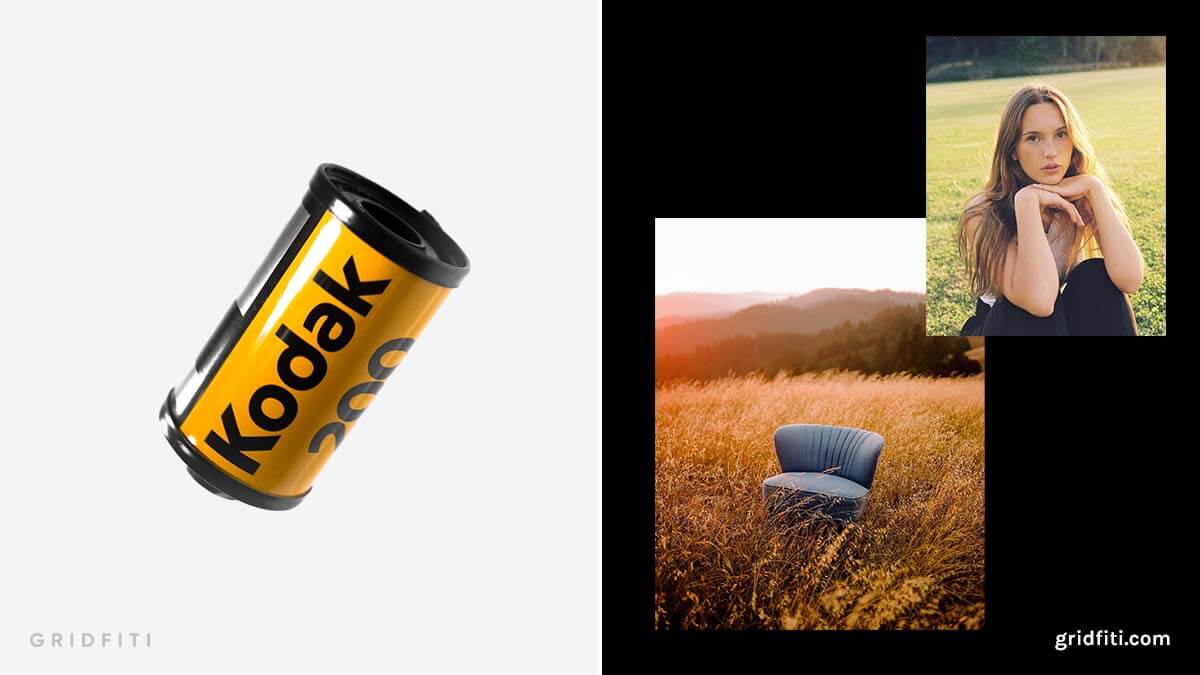 Images via @alexsamuelss and @morifilmlab
Images via @alexsamuelss and @morifilmlab
Kodak Ektar 100
Kodak’s Ektar 100 is a professional grade film that provides super high quality, fine grain due to its 100 speed. This film stock is capable of capturing a lot of detail, making it great for landscapes, cityscapes, or anything else where you want to highlight the nitty gritty. In terms of tones,
The 100 ISO does limit the film in terms of exposure latitude – so this requires metering to be on point. It’s a great film stock for photographers who are looking to get the finest quality images, but also take their time to compose and properly meter their shots right.
Wondering how it compares to Kodak Portra film? We’ve written a blog post comparing the differences between Ektar 100 and Portra 400 & 160!
Check out Kodak Ektar 100:
- Kodak Ektar 100 35mm Film: Get it on Amazon | Get it on Moment
- Kodak Ektar 100 Medium Format (120) Film: Get it on Amazon | Get it on Moment
 Images via @benjcorcoran and u/Tokyotrav
Images via @benjcorcoran and u/Tokyotrav
Kodak Ektachrome 100
Ektachrome is what’s referred to as a slide film, and what’s slide film, you ask? Well, developed film rolls you’re probably used to seeing, come out as negatives – which require being reversed and edited to achieve their final colored look. However, slide films like Ektachrome are not negatives! Once they’re developed, your film comes out in full color, acting as a master image with all of its pure tones.
Kodak E100 film is widely known to be easy to meter with due to its wide dynamic range and very forgiving exposure latitude. Ektachrome is also quite saturated, with its cooler tones pitched up. Lastly, being slide film, it’s super easy to scan and get the colors right away!
Looking for ways to emulate the Ektachrome look with your digital images? Check out these Ektachrome presets!
Check out Kodak Ektachrome 100:
- Ektachrome 100 35mm Film: Get it on Amazon | Get it on Moment
- Ektachrome 100 Medium Format(120) Film: Get it on Amazon | Get it on Moment
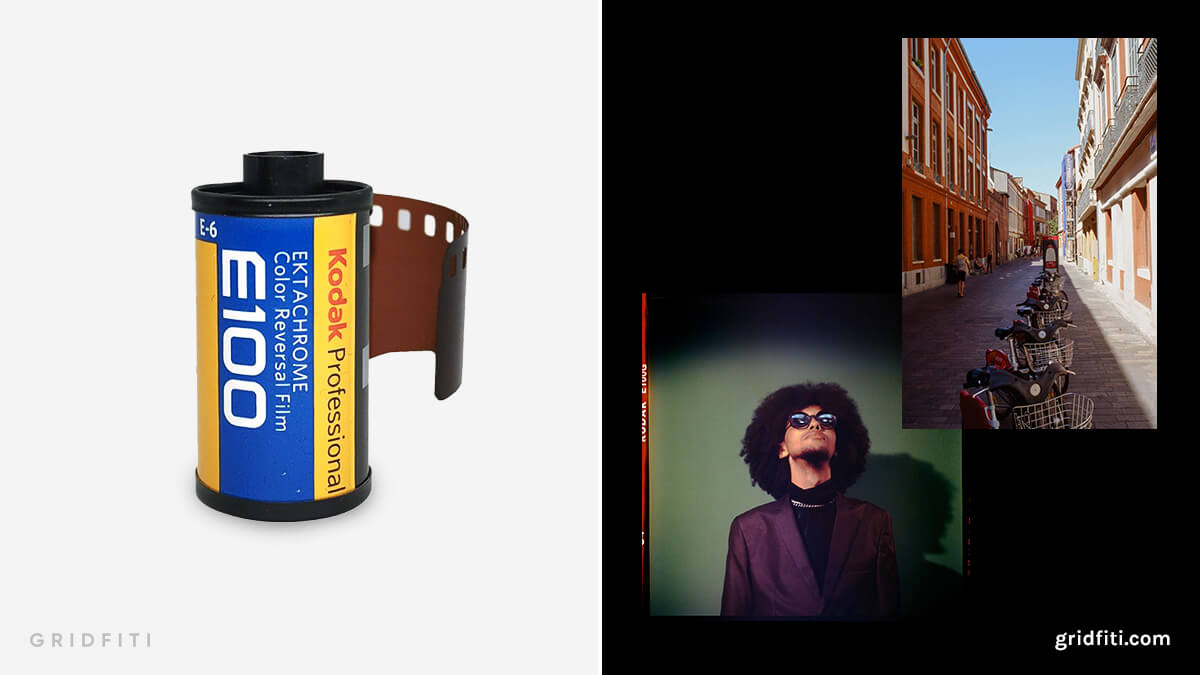 Images via @limattl and @yumin.photos
Images via @limattl and @yumin.photos
Lomography Color Negative Films
As the price of popular film stocks like Portra continue to rise, we see some notable competitors rise to the task, like Lomography. Their line of color negative films range from 100 to 400 to 800 speed films.
Lomo is known for their dazzling color reproduction and punchy contrast – you get a bit more saturation with rolls of Lomo in your camera!
The 100 speed provides you with fine grain, while 400 gets you versatility, and 800 gets you versatile daylight and nighttime performance! Not to mention, just like its Portra counterpart, Lomo does a great job with exposure latitude – so you won’t need to worry about shooting off a stop or two.
Check out Lomography Color Negative:
35mm Film
- Lomography 100 35mm Film: Get in on Lomography
- Lomography 400 35mm Film: Get it on Amazon | Get it on Moment
- Lomography 800 35mm Film: Get it on Amazon
Medium Format (120) Film
- Lomography 100 Medium Format (120) Film: Get it on Amazon
- Lomography 400 Medium Format (120) Film: Get it on Amazon
- Lomography 800 Medium Format (120) Film: Get it on Amazon
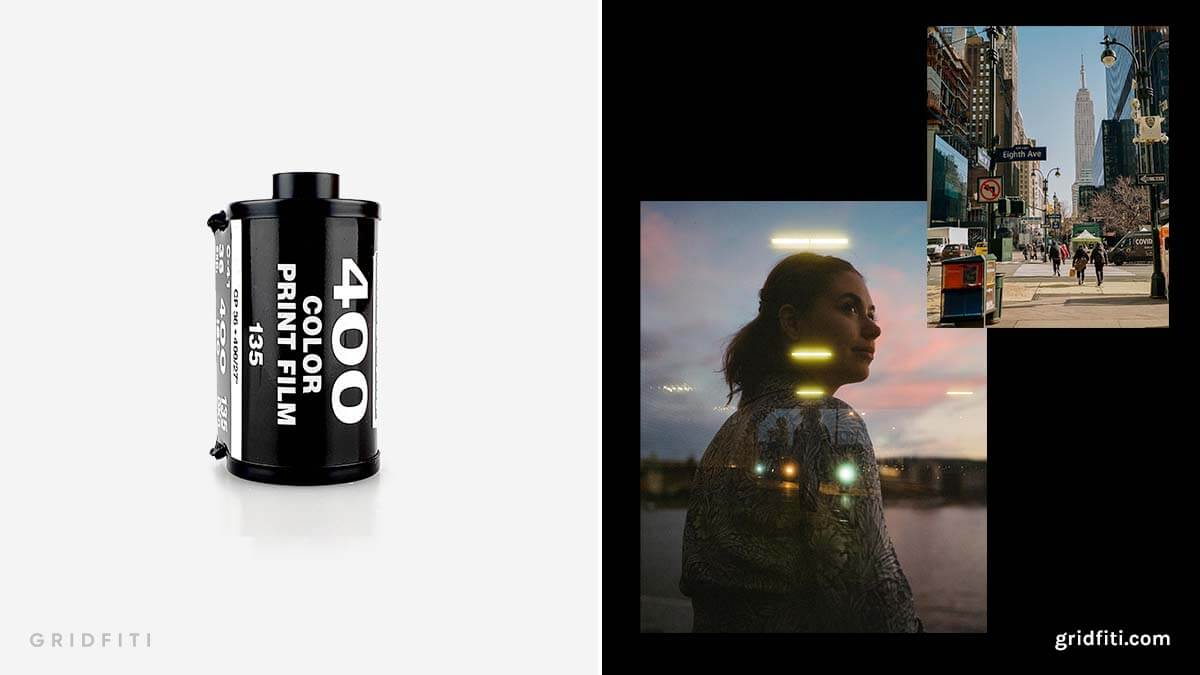 Images via @p_varsics and @sophiajcarey
Images via @p_varsics and @sophiajcarey
Fuji Superia X-TRA 400
Fuji’s Superia X-TRA’s super fine ‘sigma grain tech’ ensures fine details are kept in images when scanned – and its also got a wide exposure latitude to capture all things, without messing up metering.
This is a wonderful mid-range ISO film that can work through a number of scenarios. Known for its green tint, cooler tones and strengths in capturing skin tones, Superia X-TRA will also help your colors pop with vibrancy, yet remaining natural. Grain may be evident in other film stocks at 400 speed, but that’s mitigated by Fuji’s ‘sigma grain tech’ which ensures that images are scanned to the finest details.
Check out Fuji Superia X-TRA 400:
- Superia X-TRA 400 35mm Film: Get it on Amazon | Get it on Moment
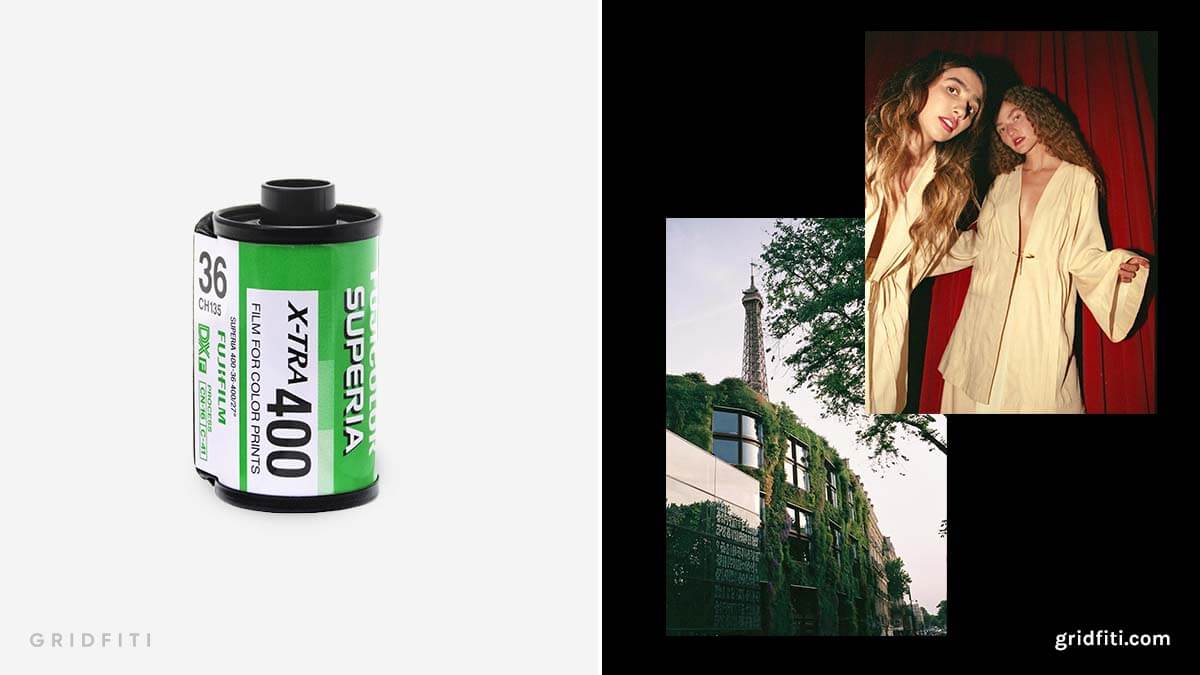 Images via @brenogaltier and @pln_mcculloch
Images via @brenogaltier and @pln_mcculloch
FujiColor C200
Fuji C200 is a super affordable film stock that packs a huge punch! This film stock is sort of an all-in-one approach to Fuji, being a highly versatile, widely available and accessible film stock.
The colors are soft, grain is fine, and it’s got a wide exposure latitude. Its tones are subtly muted on the cooler side, with reds absolutely popping. Lastly, the film stock’s 200 ISO is great for daylight capture, too. We love that there are still film stocks out there that are accessible, without sacrificing quality!
Check out FujiColor C200:
- FujiColor C200 35mm Film: Get it on Amazon
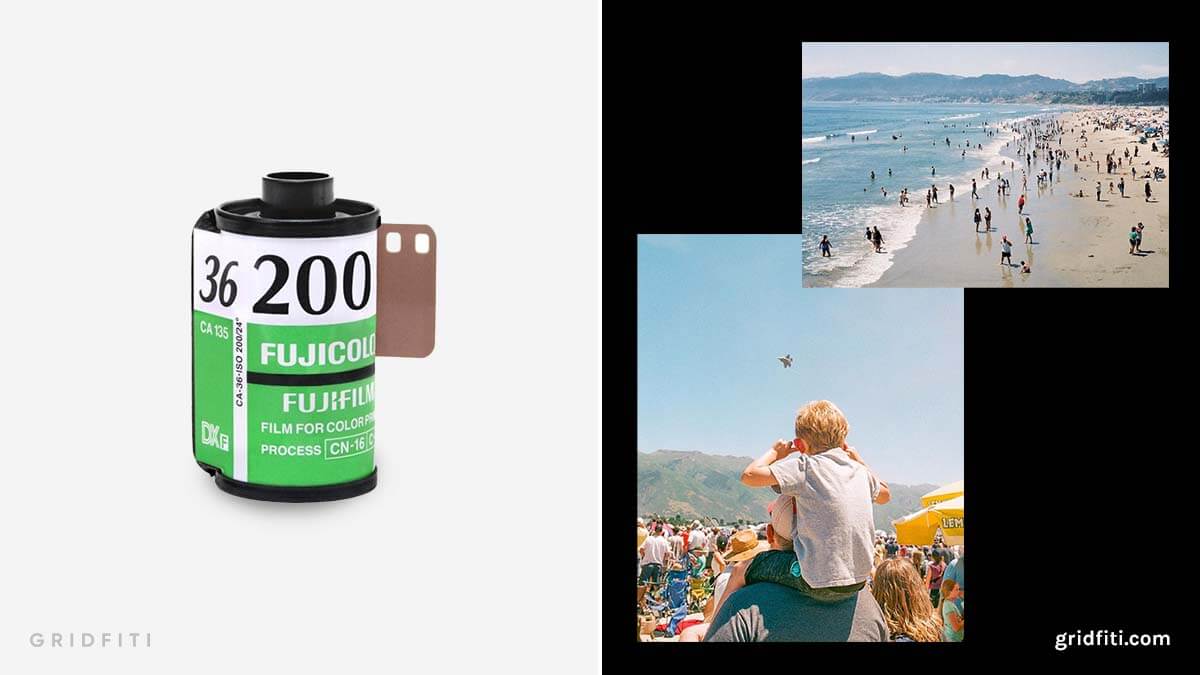 Images via @paulbundy and @boytoy
Images via @paulbundy and @boytoy
Cinestill 800T
The holy trifecta of Cinestill film starts with the coveted Cinestill 800T. This film stock that’s exploded in popularity in recent years comes from a converted Kodak Vision3 500T cinematic film – literally film that’s used in motion pictures, but converted for still photography!
The process of this conversion involves the removal of an anti-static ‘remjet’ layer, which creates dreamy glowing halation around light sources – which you’ll see in lots of Cinestill 800T photos. Beyond these characteristics, it’s also a tungsten-balanced film – which adds a cooler tone to images and an unmistakable red glow around light sources.
Check out Cinestill 800T:
- Cinestill 800T 35mm Film: Get it on Amazon | Get it on Moment
- Cinestill 800T Medium Format (120) Film: Get it on Amazon | Get it on Moment
 Images via @olufilmz, @trmpendleton and u/Leif1013
Images via @olufilmz, @trmpendleton and u/Leif1013
Cinestill 50D
Cinestill 50D is the daytime variant of Cinestill’s 800T. Where 800T is balanced for tungsten colors, 50D is balanced for daylight! You’ll notice this in the way colors are pronounced, combined with some nice contrast. Cinestill themselves claim that this is the sharpest and finest color film in the world – this is fairly evident due to its 50 ISO fine grain, allowing you to create remarkably high res images.
Check out Cinestill 50D:
- Cinestill 50D 35mm Film: Get it on Amazon | Get it on Moment
- Cinestill 50D Medium Format (120) Film: Get it on Amazon | Get it on Moment
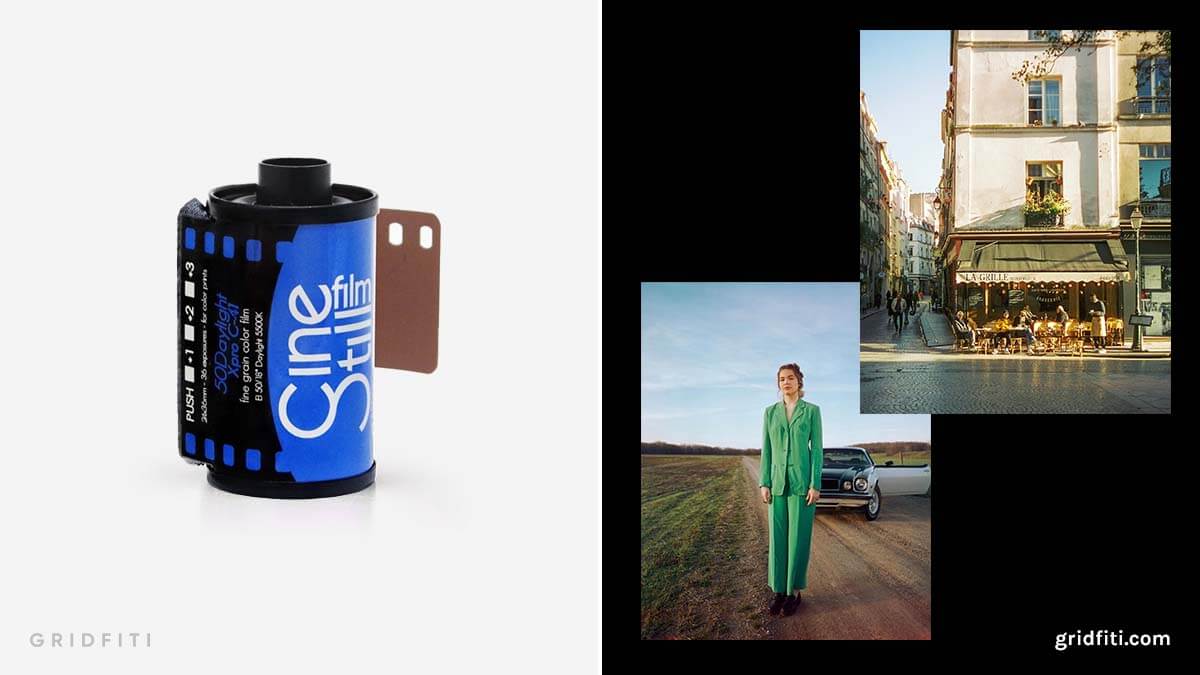 Images via @benjcorcoran and @cocosflavor
Images via @benjcorcoran and @cocosflavor
Cinestill 400D
Cinestill 400D is the latest addition the the Cinestill family, sitting at the midpoint between the ultra fine 50D and the high speed, tungsten-balanced 800T. Where the other two Cinestill film stocks are more purpose-built for daytime or nighttime, 400D is your go-to, all-purpose Cinestill film stock.
It’s also balanced for daylight like 50D, but with more sensitivity to light at the ISO of 400 – allowing you to shoot in situations with less light. The colors come out naturally, yet on the cooler, bluer side of the spectrum with subtle contrast to tie the images altogether.
Cinestill 400D is still in its crowd-funding phase, but should be available to the public soon!
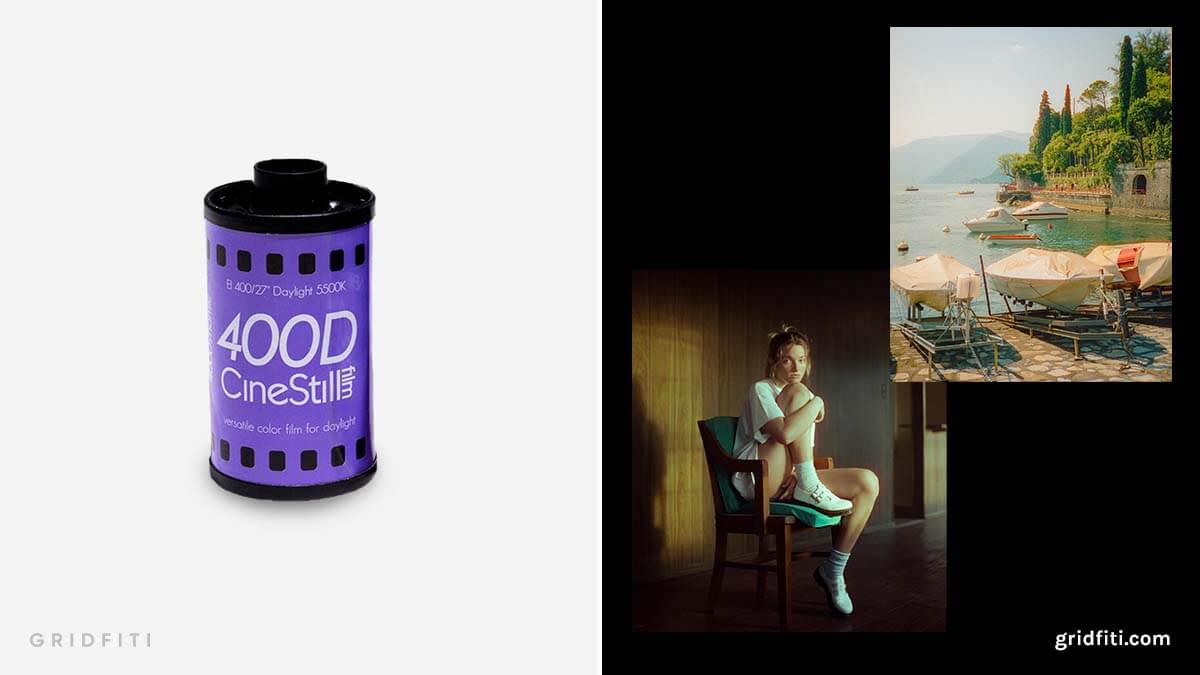 Images via @benjcorcoran and @tom___de
Images via @benjcorcoran and @tom___de
Kodak Tri-X 400 Black and White Film
Kodak Tri-X 400 is a premium film stock that’s popularly referred to as Portra 400’s black and white cousin. This is due in part to its 400 speed and wide exposure latitude that you’d find in Portra. The film can be overexposed a few stops to create deep blacks and clean whites, while the 400 ISO gets you fine grain in your image – again, similar to how Portra would!
Check out Kodak Tri-X 400:
- Kodak Tri-X 400 35mm Film: Get it on Amazon | Get it on Moment
- Kodak Tri-X Medium Format (120) Film: Get it on Moment
 Images via @raulazzaretto and @haus.danst.haus
Images via @raulazzaretto and @haus.danst.haus
Ilford HP5 Plus 400 Black and White Film
Ilford HP5 Plus 400 has become a modern pick and go-to for black and white film. Where Kodak’s Tri-X takes a more contrasted tone, HP5 softens up. Given its mid-range 400 speed, it also has a forgiving exposure latitude – allowing you to shoot frames with both very dark and very bright elements. We think Ilford HP5 makes for a great first go at black and white film photography!
Check out Ilford HP5 Plus 400:
- Ilford HP5 Plus 400 35mm Film: Get it on Amazon | Get it on Moment
- Ilford HP5 Plus 400 Medium Format (120) Film: Get it on Amazon | Get it on Moment
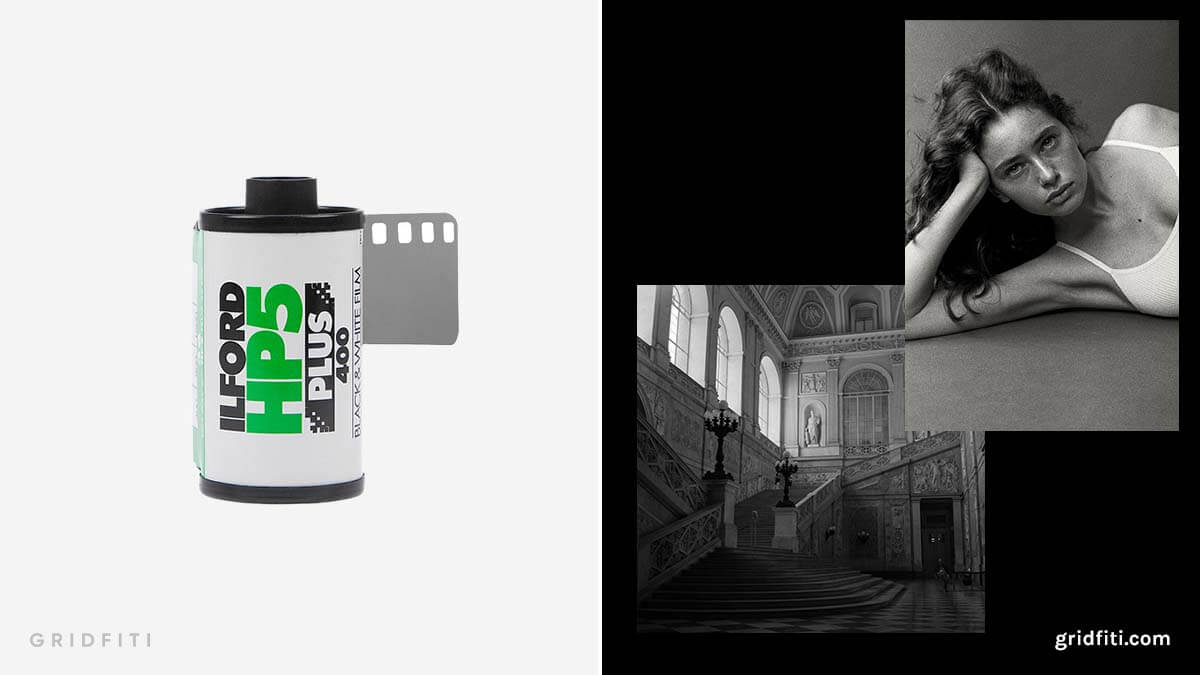 Images via @raulazzaretto and @byfer39
Images via @raulazzaretto and @byfer39
Which one of these film stocks do you plan on shooting with? Any favorites you use already? Let us know in the comments below!
Gridfiti is supported by its audience – when you buy something using the retail links in our posts, we may earn a small commission at no additional cost to you. Read more about our affiliate disclaimer.